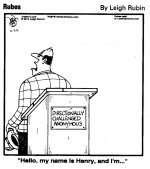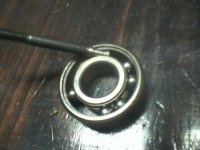I’m relatively new to milling, but am servicing my circa-1951 “Swinsten” milling machine to improve its accuracy. I also plan to upgrade the chuck from a very old Clarkson (I believe C style) to an ER, to give me more tooling options.
When trying to remove the chuck from the spindle column I identified a sluggish bearing and decided to remove and replace both of them. This was also necessary in order to remove the chuck as something on the chuck was snagging on the bearing, making it impossible to remove.
I’ve drilled out the set screws that were holding the bearings in place, and have tried hammering them, prying them, pulling and pushing at them but they’re firmly in place. They are so tightly secured that I’m wondering if they were press fit and will need an arbor to remove, or if there is something holding them in there that I don't know about.
Does anyone know a good method of getting stuck bearings out? The bearings can be scrapped, but I don’t want to damage the column or sleeve/ chuck.
The mill with spindle column removed:
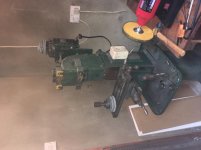
The "Swinsten" Badge:
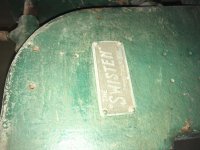
The Clarkson Autolock chuck (I think it's "Type C" ) :
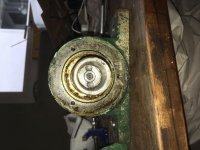
The spindle column: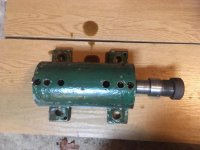
The top of the chuck (where the drawbar would normally end, but I don't think this chuck has a drawbar) and the bad bearing to be removed. I have since removed the fasteners holding the spindle in place:
When trying to remove the chuck from the spindle column I identified a sluggish bearing and decided to remove and replace both of them. This was also necessary in order to remove the chuck as something on the chuck was snagging on the bearing, making it impossible to remove.
I’ve drilled out the set screws that were holding the bearings in place, and have tried hammering them, prying them, pulling and pushing at them but they’re firmly in place. They are so tightly secured that I’m wondering if they were press fit and will need an arbor to remove, or if there is something holding them in there that I don't know about.
Does anyone know a good method of getting stuck bearings out? The bearings can be scrapped, but I don’t want to damage the column or sleeve/ chuck.
The mill with spindle column removed:

The "Swinsten" Badge:

The Clarkson Autolock chuck (I think it's "Type C" ) :

The spindle column:

The top of the chuck (where the drawbar would normally end, but I don't think this chuck has a drawbar) and the bad bearing to be removed. I have since removed the fasteners holding the spindle in place:



